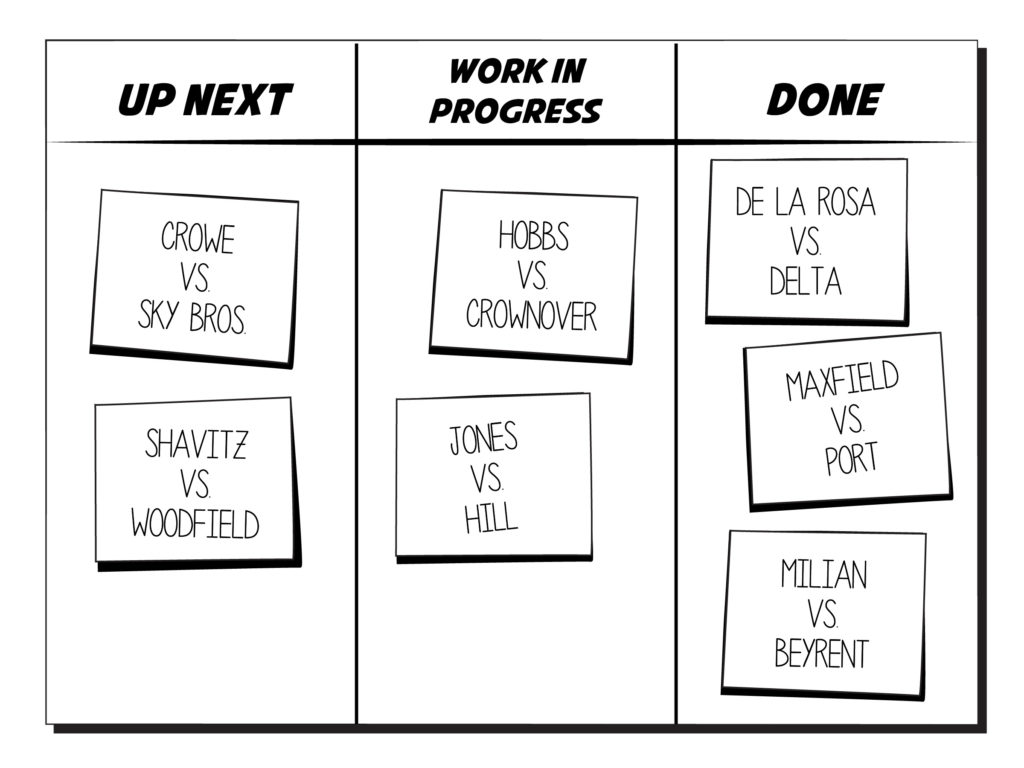How a Law Firm is Like a Donut Shop

This article is based on Episode 27 of the Lean Law Firm Podcast, where I discuss an analogy that my co-author Dave Maxfield and I use during our live event.
Have you been to a Duck Donuts? It’s a little slice of heaven for those of you not on a carb-free diet. And it’s really worth the trip and the calories because when you visit a Duck Donuts, you can also study how to improve your law firm. Justify away!
Think about what happens when you go to a donut shop: You have a problem (no donut), and you are willing to pay money to solve said problem. In the case of Duck Donuts, the service provider assembles the donut right in front of you. It is fried, decorated with lots of delicious toppings, and placed in a box or bag. (Yes, you could swap out any place with an assembly line for this example such as Chipotle or Subway. But we’d rather talk about donuts!)
Law firms, like donut shops, solve problems for money. A law firm also has a production line, though we have to tease out what that looks like since attorneys trade in knowledge and maneuvering, not tangible goods. And as with Duck Donuts, the more a firm can improve efficiency and maximize profits while taking care of clients, the more successful it will be.
Modeling Production with Kanban Boards
Obviously, donuts are delicious things you can hold in your hand and eat, while legal services are not. As a result, this can make it difficult to visualize the production system of a law firm. What are the legal equivalents of the fryer, the toppings station, and the packaging?
Kanban boards to the rescue!
Behold:

Kanban boards are one of the best ways to analyze every step of a system or production process, whether we’re talking about an intellectual service like law, architecture, or software, or a tangible good.
They are surprisingly simple: A Kanban board is a series of swim lanes, left to right, that model the phase a case can be in. Cases are on index cards (or virtual index cards) that travel from left to right, from start to finish for a project. In their simplest form, you want to track what’s up next, what’s in progress, and what’s done.
In law firms, the trick is to define broad enough categories so that the steps make sense, but not too specific so that you have a Kanban board with 20 lanes. For your practice, you might include columns like “Intake,” “Need to File,” or “Discovery.”
Even though a Kanban board seems like the most basic tool imaginable, they have an amazing power. They translate physical production into knowledge work. Your cases go through a system the same way a donut goes from the mixer to the fryer to the toppings.
System Thinking KPIs
Critically, once you have a system, you can now start to apply systems thinking and measurement in the form of Key Performance Indicators (KPIs) to your law firm. You can, for example, measure the speed at which cases spend in each phase, and how long they take from start to finish.
System thinking techniques like Kanban boards and KPI tracking keeps you in touch with your firm. They help you to clearly see what your processes look like, where you encounter bottlenecks, how much time certain processes take (and what those processes essentially cost you in terms of money), and how to improve in order to maximize profits.
If Duck Donuts can sell more donuts in a day, will it make more money? Of course. So it stands to reason that we might want to measure what this number of donuts is, and see if we can’t produce more and more of them. The amount of donuts Duck Donuts can process and sell in any given time period is known as its throughput rate.
Throughput rate is one of the most important KPIs in Lean to predict your income. Do you know how many cases you finish in a year, meaning the case is closed and money collected? If you do, congratulations, you are in the minority. You can then improve your firm next year.
The next question: If Duck Donuts can shorten the amount of time it takes to make a donut, can they increase their throughput rate? The answer, intuitively, is yes, and there’s mathematical proof that backs this up. The amount of time it takes to make a donut is known as cycle time.
In Lean, cycle time is another critical KPI. In a law firm context, cycle time is the amount of time it takes for a case to complete from start to finish. “Started” means an engagement letter is signed, and “finished” means money is collected and the case is closed.
Granted, not everything in law is inside your control. If rules of civil procedure allow opposing counsel 30 days to respond to something, there’s nothing you can do about that. However, when something is within your ability to control it, you need to do everything you can to make sure it’s done as efficiently as possible.
For flat fee and contingency billers, the ultimate goal is to reduce cycle time as much as possible. The shorter your cycle time is, the higher your throughput rate, and the more profitable the firm is.
If firms that do hourly biling can transition to a flat fee pricing model, they can make a lot more money. The reason for this is that they are no longer incentivized by working more hours on the same case. If the average price per case stays the same but the time spent working on the case drops, more cases can cross the finish line in a given year and the law firm generates more revenue.
Share post:







